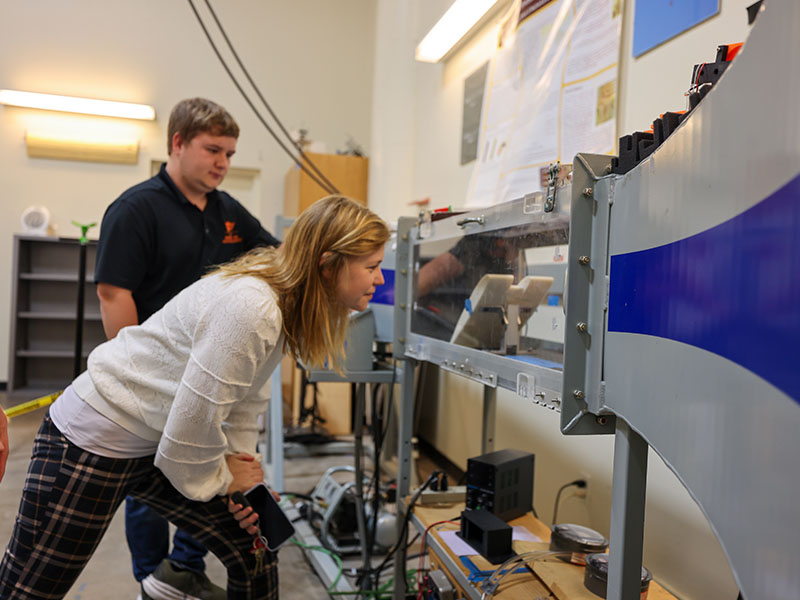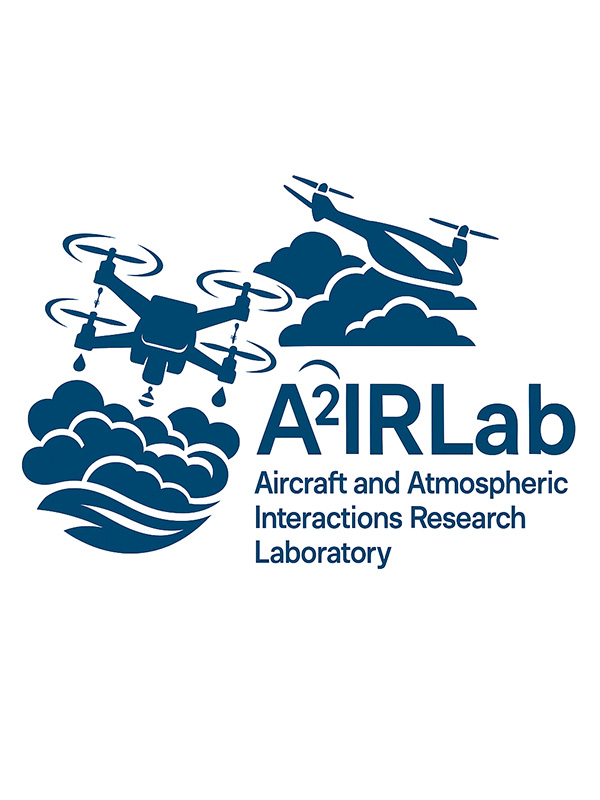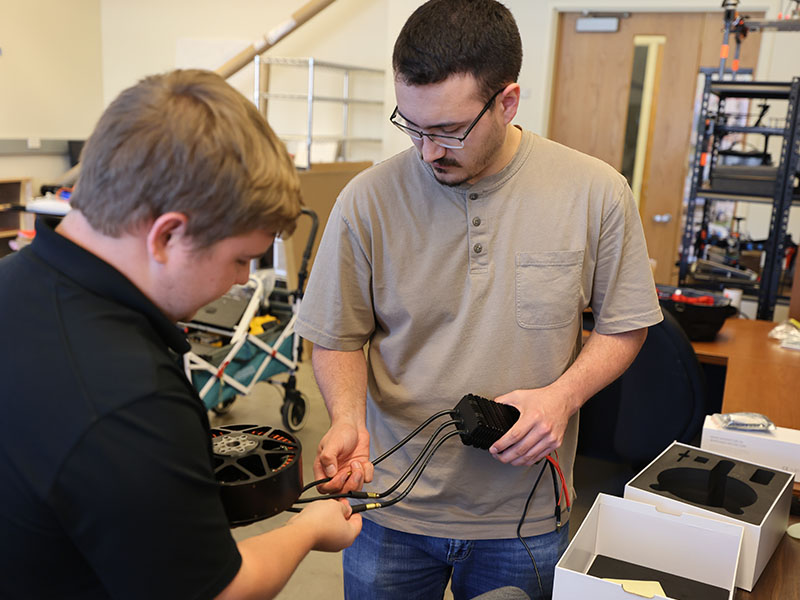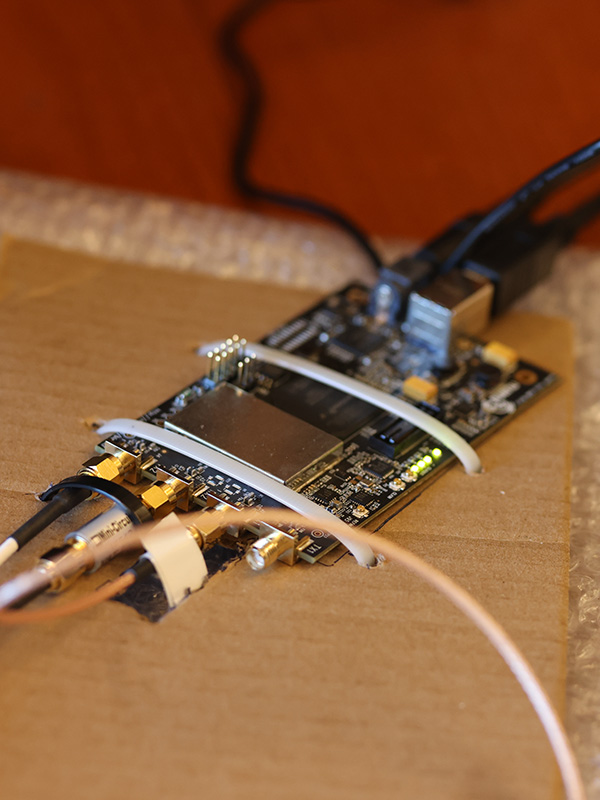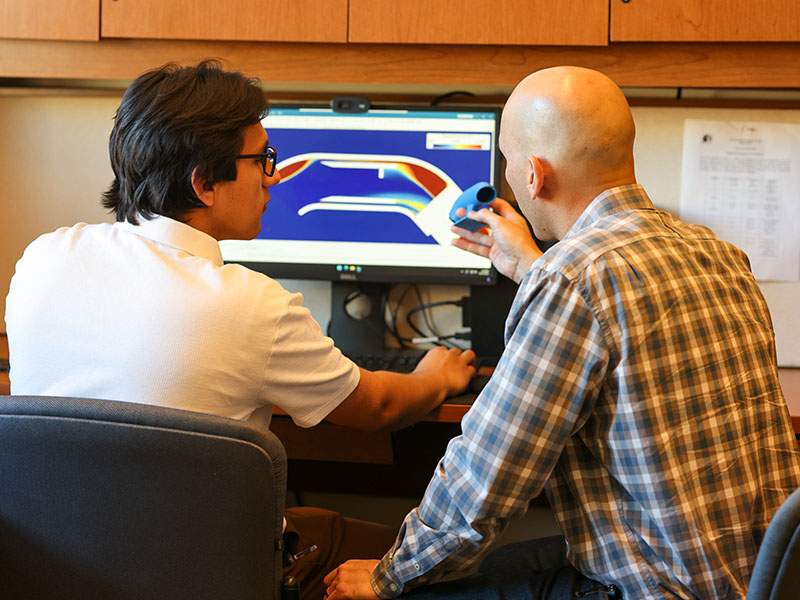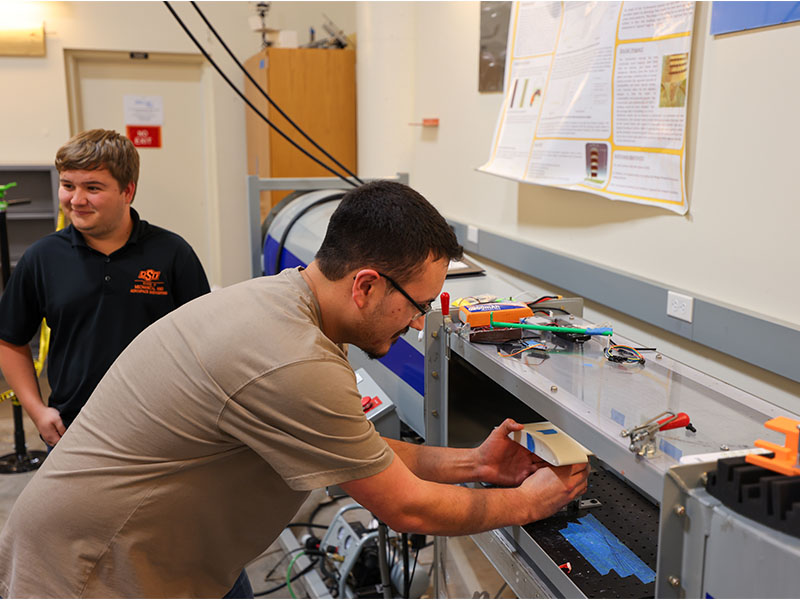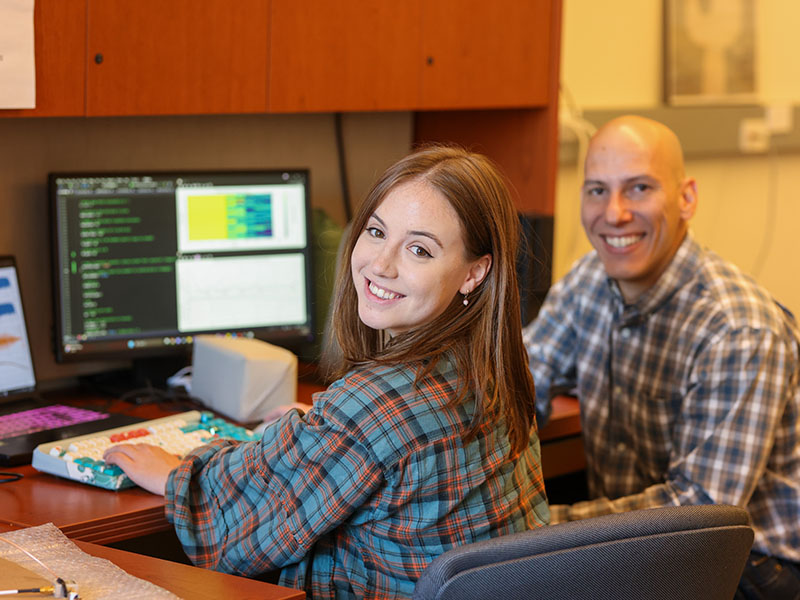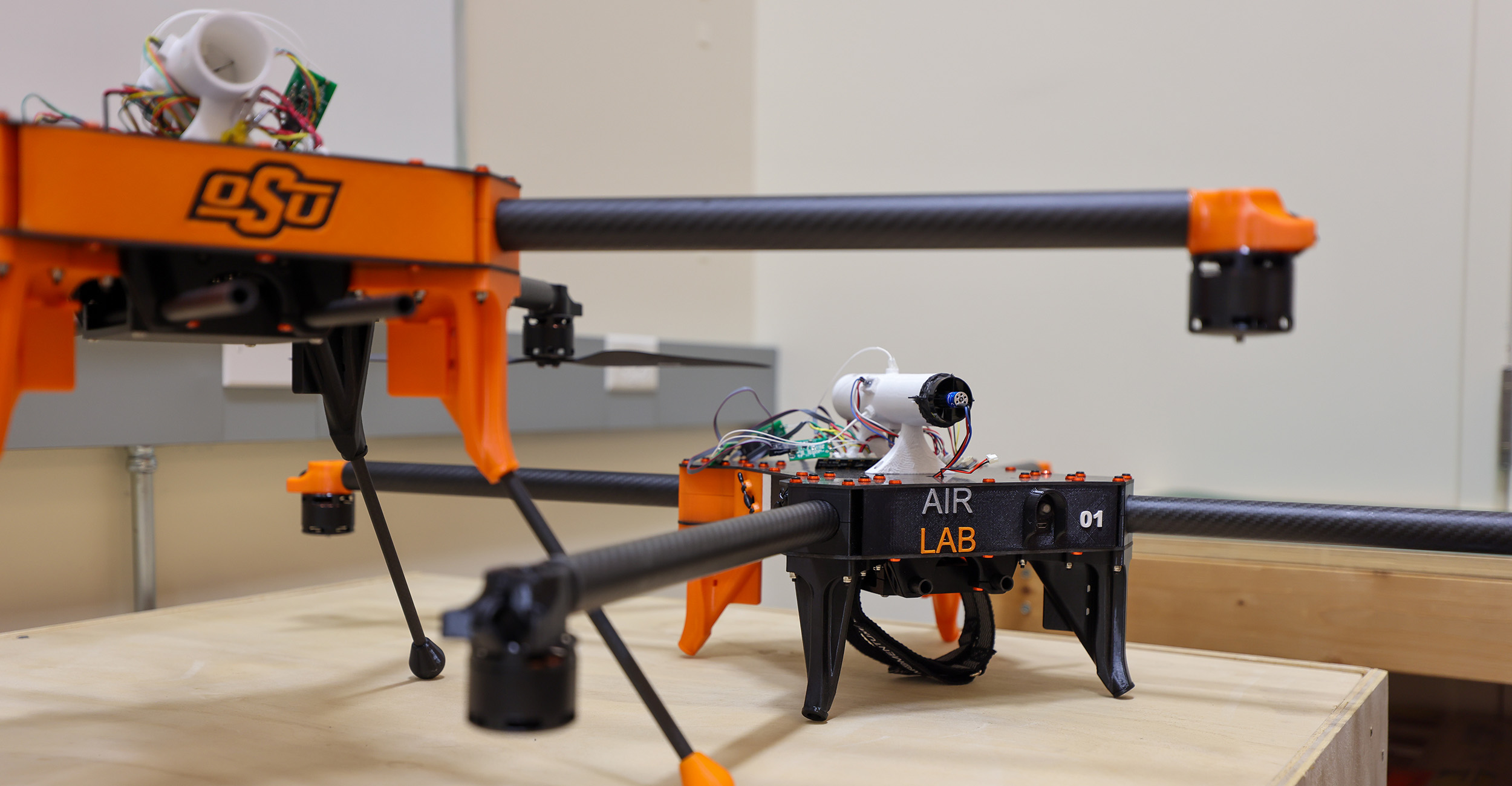
CEAT's new Aircraft and Atmospheric Interactions Research Laboratory
Tuesday, November 18, 2025
Media Contact: Desa James | Communications Coordinator | 405-744-2669 | desa.james@okstate.edu
The Aircraft and Atmospheric Interactions Research Laboratory (A2IRLab) is leading pioneering research at the intersection of autonomous systems, multi-modal sensing, atmospheric science and aeronautical engineering.
The lab focuses on developing Weather-sensing Unmanned Aerial Systems (WxUAS) and investigating how low-altitude weather phenomena affect the performance, safety and efficiency of next-generation aircraft — particularly small unmanned aerial vehicles and emerging Advanced Air Mobility platforms.
Designed to foster collaboration across disciplines, A 2IRLab brings together experts and students from multiple fields to advance both science and education. The lab provides students with hands-on research experience in a multidisciplinary environment.
A2IRLab’s approach reflects the diverse expertise of its founding faculty, Drs. Alyssa Avery and Gustavo B. H. de Azevedo, and their graduate students. Avery is a teaching assistant professor in the School of Mechanical and Aerospace Engineering, and de Azevedo serves as a research assistant professor in the Oklahoma Aerospace Institute for Research and Education, with an interdisciplinary affiliation in MAE.
Together, Avery and de Azevedo advise graduate students from MAE and the School of Electrical and Computer Engineering and have established partnerships with other Oklahoma State University colleges and universities nationwide.
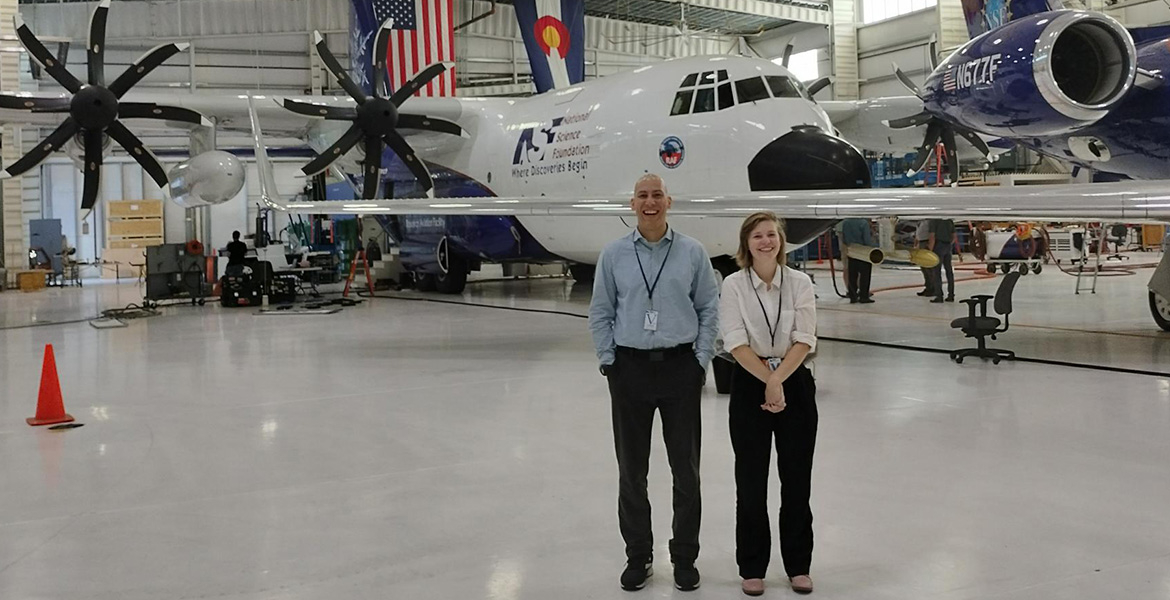
A2IRLab’s work focuses on a critical but under-observed region of the atmosphere, extending from the surface up to roughly 5,000 feet (1.5km). This region is where most AAM and sUAV operations are expected to occur, yet it remains one of the least understood parts of the atmosphere.
Conventional weather observation systems struggle to capture detailed data in this range. Weather radars target upper regions, while radiosondes (weather balloons) collect too few samples. Satellite-based sensors often face interference from clouds and aerosols, and manned aircraft observations are too expensive and hazardous to operate near the surface. As a result, fundamental gaps persist in understanding how weather phenomena evolve within this layer and how these factors affect aircraft performance.
These observational limitations are compounded by a lack of research on the flight dynamics of slow-flying aircraft. While high-speed aircraft have been extensively studied, the aerodynamic and stability characteristics of sUAVs and AAM aircraft, many of which rely on distributed electric propulsion and hover-capable designs, remain poorly understood.
Through an integrated approach that combines laboratory experimentation, field campaigns and numerical simulations, A2IRLab is advancing sensing technologies and measurement strategies to address this critical observation gap.
A2IRLab graduate students are laying the groundwork for a future in which aircraft can safely and intelligently navigate the dynamic lower atmosphere to deliver services and benefits across society.
While the lab’s primary focus is to enable the safe introduction of AAM aircraft into the National Airspace System, in support of the AAM economy and its potential to enhance connectivity and resilience in rural regions, the resulting data and insights are expected to yield broader benefits. These include immediate applications in general aviation and helicopter emergency medical services, as well as indirect contributions to energy distribution, agriculture and wildlife management.
Furthermore, Avery and de Azevedo anticipate that the improved characterization of the atmospheric boundary layer produced by this research will support more informed, weather-sensitive decision-making in emergency management contexts.
Avery and de Azevedo would like to thank CEAT Facilities Manager Patrick Wheeler and Building Maintenance Mechanic Dan Webb for their work in preparing the new lab space.
Aircraft and Atmospheric Interactions Research Laboratory
